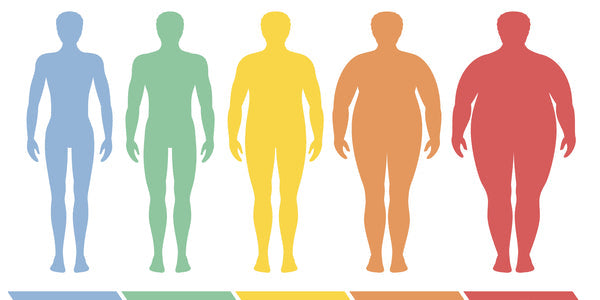
A recently published forecast by the Organization for Economic Cooperation and Development predicts that 3 out of 4 Americans will be overweight or obese in just one decade--by 2020. The forecast also says that United States will then be home to the world’s most overweight population, with the obesity rate in America climbing to 3 out of 4 people.
This is not good news...
While OECD is better known for forecasting economic trends and employment levels, the organization researched the obesity rate in America as a means to bring attention to this serious health epidemic and the serious economic implications that can come with it. The recent increase in obesity in industrialized nations across the globe has become a growing concern for many governments.
With these staggering statistics, this forecast is a call to action for governments and citizens alike to come together quickly and develop strategies to combat the effects of obesity.
It all starts with the food...
Food is generally less expensive now, but what many people fail to realize is that a lot of the food has little nutritional value. In fact, a lot of the foods at your local grocery store are loaded with more chemicals than a college chemistry lab.
A lot of packaged foods on the grocery shelf today are energy dense junk food that is processed to be shelf stable, and lacks the nutritional qualities that are essential to your health.
The unhealthy and quick meals that we find at the grocery store can just as easily be handed to us from a person reaching out from a window to your car. Unfortunately, the concept of eating healthy is more difficult thanks to fast-food restaurants who have expanded their high-calorie food to almost every corner of the world.
Most fast food restaurants are billion-dollar empires who have become so profitable thanks to millions of consumers all over the world. With a society built around modern technology and multitasking, people are looking for a fast, cheap meal that fills them up.
According to reports in 2008, McDonald’s had over 31,000 restaurants in over 118 countries. That’s a lot of golden arches, and a lot of high-calorie food.
Instead of driving up to that window, or reaching for that convenient pre-packaged meal, shop for leaner cuts of meat and go for the fresh vegetables instead of the "bagged" ones.
Properly portion your meals so they will satisfy your hunger, but leave you satisfied. Instead of overstuffing yourself, make a meal like grilled chicken with fresh green beans and cooked baby carrots. The grilled chicken will leave you satisfied, and the fiber in the green beans will help curb your food cravings until it's time for your next meal.
If you can't afford to buy healthy cook book, go to your local public library and check out a book instead. Most public libraries have a vast array of different cook books that are professionally written by experts in the nutrition field. Instead of buying just one cook book, you can pick up mulitiple books for the same price.
By ignoring the drive-thru, researching what we eat, and taking the time to grocery shop the smart way, you are helping decrease the obesity rate in America more than you think.
Start Thinking Ahead
Due to the recession in this country, eating healthier has become more difficult. With restaurants like McDonalds offering deals like the dollar menu, it’s difficult to resist those money-saving bargains that can satisfy our hunger
The best way to think of healthy eating? Start thinking about it as a 401k. You will be required to make sacrifices when making healthy choices, but the long-term benefits outweigh the costs. Eating healthier, less-fattening foods will drastically reduce the long-term costs of treating obesity and weight-related disease and illness down the road.
Another factor fueling the obesity rate in America and across the globe is that people are much less physically active than they have been. In 1980, overweight people comprised less than 50 percent of the United States’ population. Today, that number has climbed to nearly 70 percent, and the statistics continue to grow.
Eating healthy is difficult, but each and every one of us has the potential to be an advocate for making healthier choices. Simply by talking about your commitment to weight loss to family, neighbors and co-workers, you are spreading the positive energy it will take to inspire others to lead healthier lives.
According to predictions published in the journal Obesity, 86 percent of U.S. adults will be overweight or obese by 2030. The human implications of the obesity rate in America can be difficult to discuss. The best way to deal with these issues is to just be honest with yourself. Habits, particularly poor eating and unhealthy choices, don’t get fixed overnight. The first step toward making better judgments is admitting that you need help to get there.
You don't have to go through the healthy lifestyle transition on your own. In fact, involving close friends and family in the process can help keep up your motivation and make those healthy eating goals seem a little more attainable.
Unless you want the forecasts of today to become the reality of tomorrow, you will have to commit yourself and inspire others to make healthier choices. This is always a challenge and we at BistroMD recognize that this can often be difficult. But we’re here to help you prevent obesity. How? Let’s just say that nutrition is our middle name!






